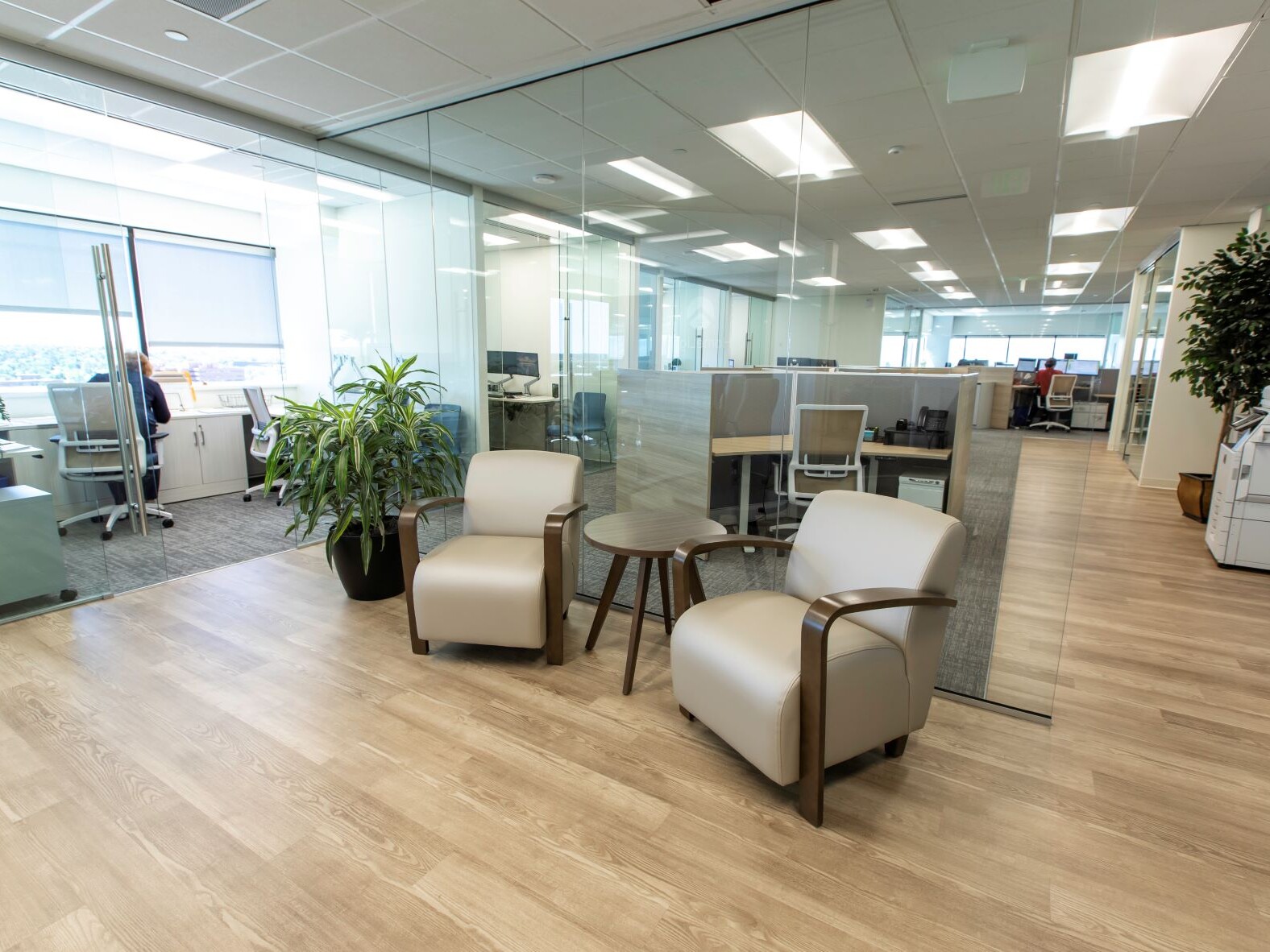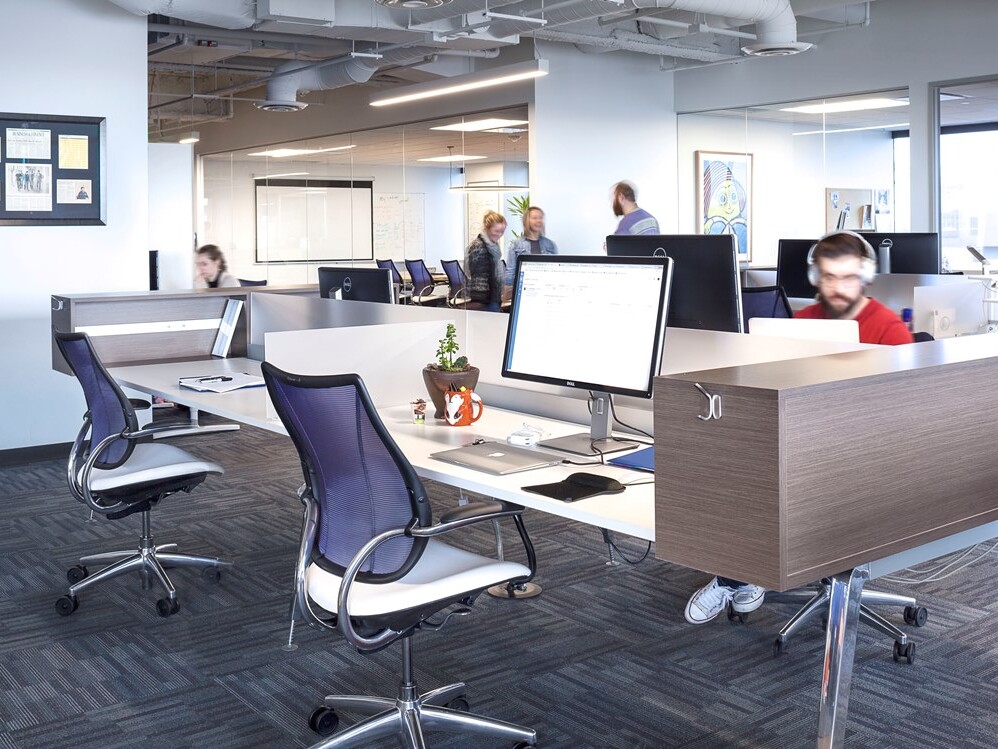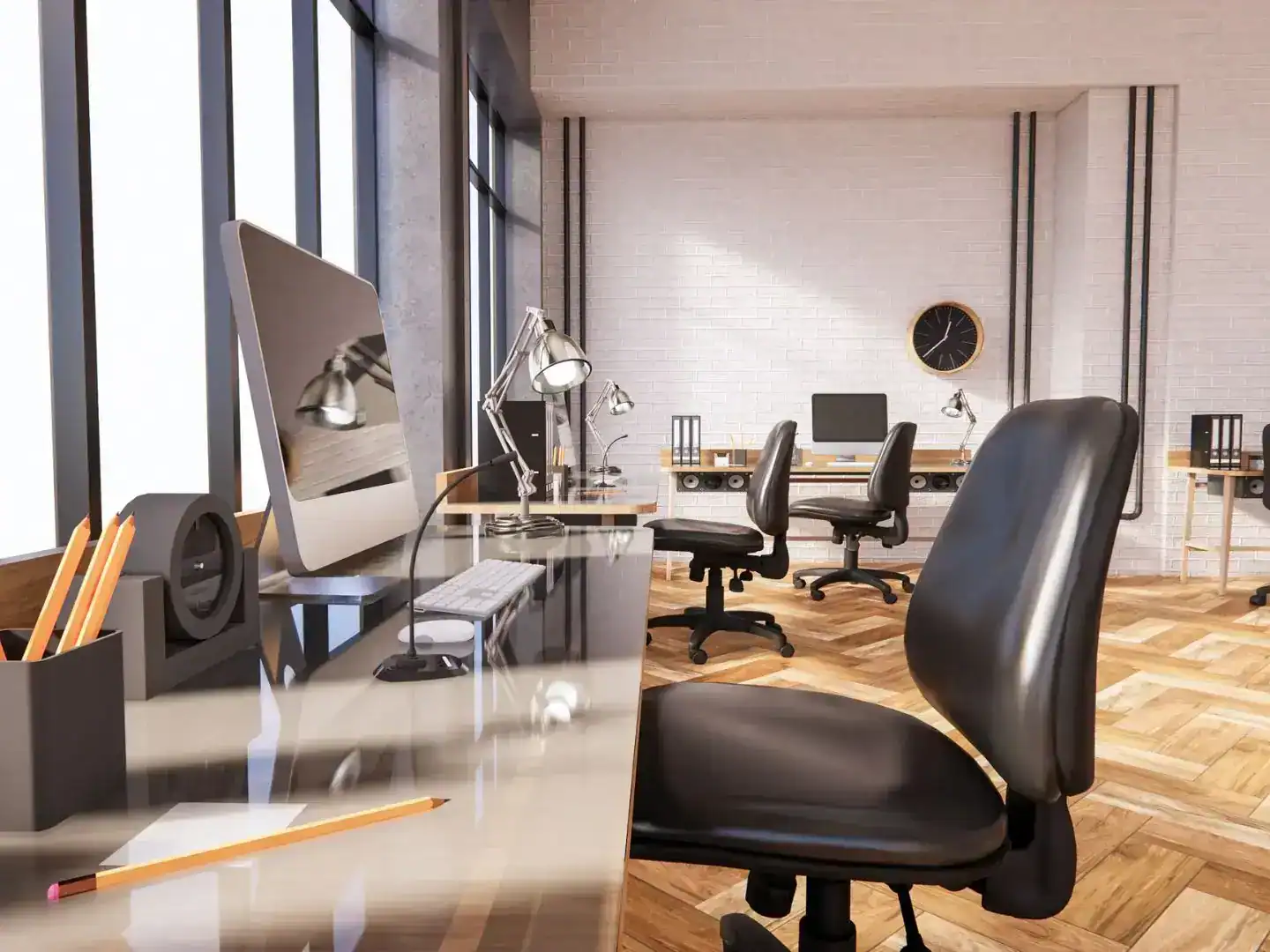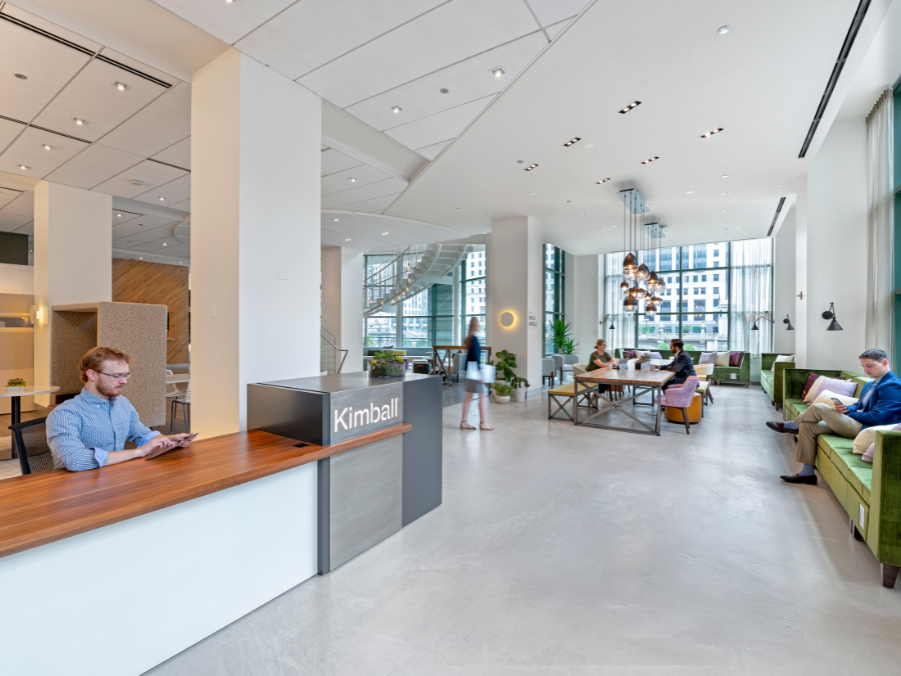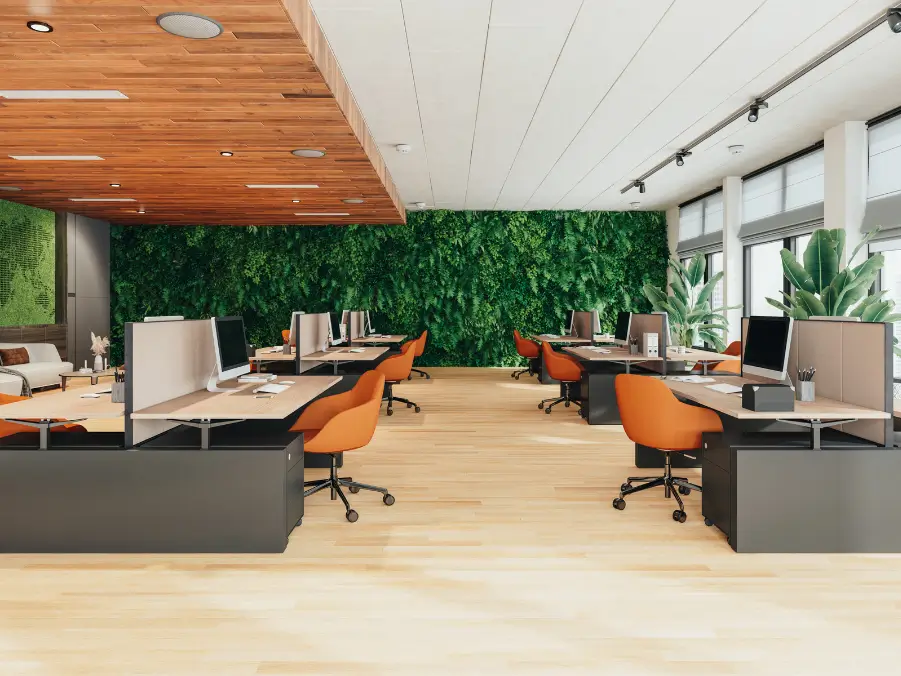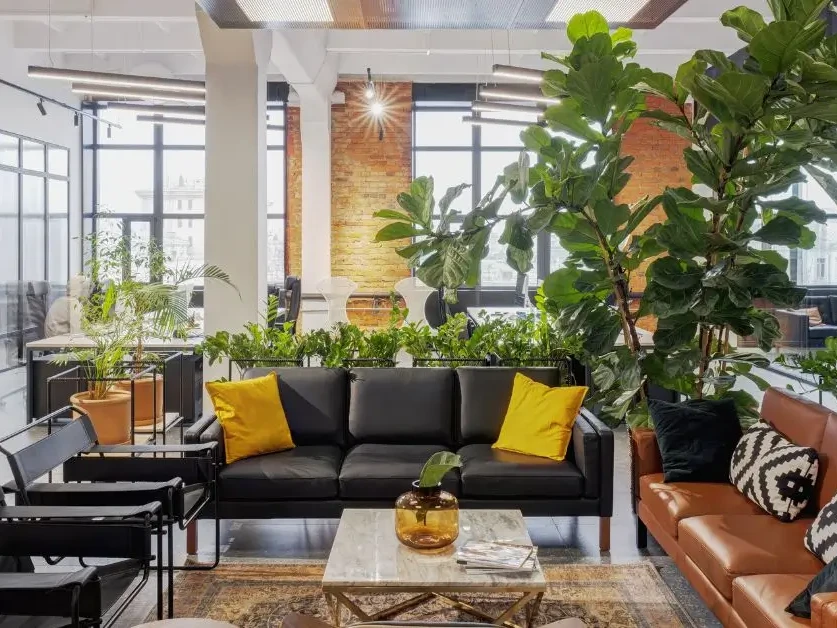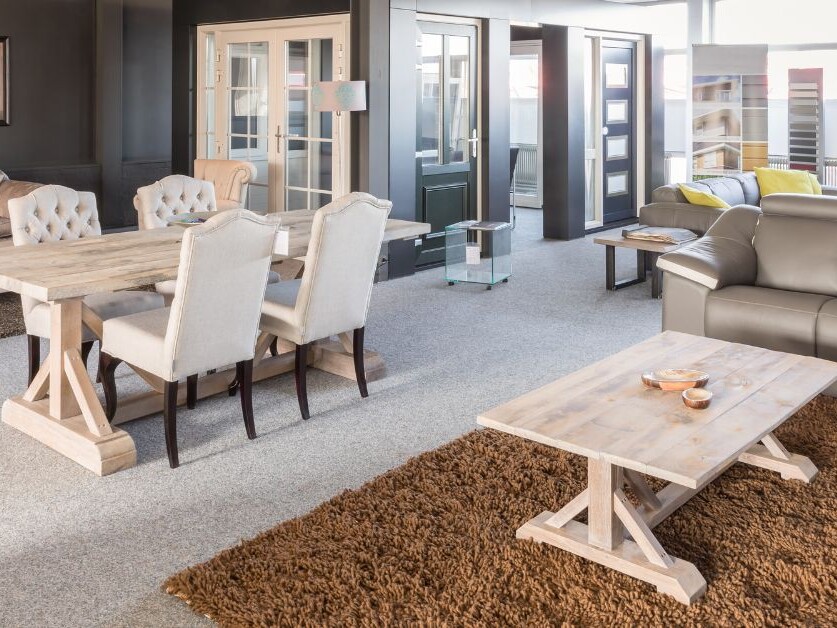From millennials to technology to social networking, many factors have fostered collaboration in the workplace.
Collaborative spaces are more important than ever. As walls and cubical workstation panels come down, integration and communication is on the rise. Departments that were once segregated are now collaborating. With real estate prices climbing, business owners are forced to maximize floor plans.
The startup culture sweeping the world is also making businesses think about their space differently. Having a flexible and active floor plan means not having to commit to anything limiting, but rather allowing your space to be fluid, evolving and adaptive.
Technology has cut the cord on communication, giving team members more freedom to move both inside and out of the office. Touchdown work spaces are critical for employees on the go; meeting spaces are still critical, but evolving to keep pace with today’s active work life. Private enclaves are springing up around social spaces for small gatherings to break away for a quiet meeting.
Millennials are fueling design trends. Social networking applications such as Twitter, Facebook, Instagram and Snapchat are actually driving change in the workplace. According to the MTV survey “NoCollar Workforce,” 89 percent of millennials want work to be social – and even the majority of Baby Boomers (60 percent) agree. Being social online means millennials want to be social at work.
Office buildings are now designed to be open. We’re seeing less and less drywall, which allows businesses to be much more flexible with their space. Flexibility means it’s easier to grow, shift and share space, all of which maximizes real estate investments.
Collaboration is no longer a trend. A plethora of furniture solutions exist for collaborative spaces, along with plenty of workstation and desking options. Be sure to consult one of our design experts to discover ways your space can be more social.
